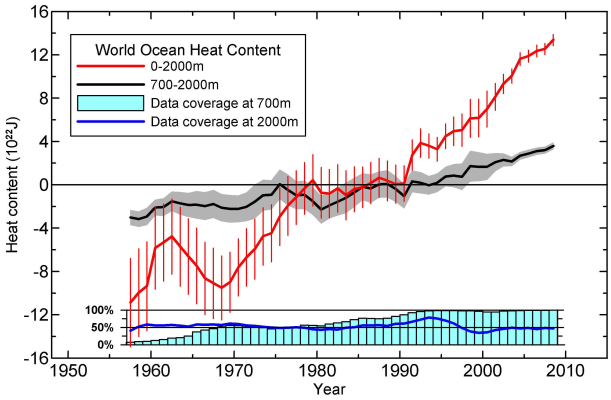Dr. William Gray is renowned for his work on Atlantic hurricanes. He is also renowned for forcing his opinion related to climate change into discussions by climate scientists (this at the same time saying climate scientists have no business in tropical meteorology predictions…). So it was with interest that I read a synopsis of his team’s latest seasonal forecast (the team is now headed by one of his former students, Dr. Klotzbach):
Expect one of the quietest Atlantic hurricane seasons since 1995 this year, say the hurricane forecasting team of Dr. Phil Klotzbach and Dr. Bill Gray of Colorado State University (CSU) in their latest seasonal forecast issued April 4.
The privately funded forecast contains interesting comments [emphasis mine]:
Everyone should realize that it is impossible to precisely predict this season’s hurricane activity in early April.
We issue these forecasts to satisfy the curiosity of the general public…
The reader will note that we are incorporating a dynamical SST forecast from the European Centre for Medium-Range Weather Forecasts (ECMWF). Hindcast data provided by Frederic Vitart indicates that the ECMWF model system 3 has significant forecast skill for SSTs across the various Nino regions for September from a 1 March forecast date. We utilize the ECMWF ensemble mean prediction for September Nino 3 SSTs. The ECMWF has recently upgraded to system 4. Hindcast data from this new model is not available yet, but it is assumed that the model has improved skill to system 3. Hindcast data from 1982-2010 show that the ECMWF forecast from system 3 from a 1 March issue date correlates with observed September Nino 3 SSTs at 0.63.
I have some comments about all of this, especially in light of the requirements Dr. Gray would apply to climate projections based on physics while his forecasts are based on statistical correlations derived by looking back in time.
It is impossible to predict precisely any variable into any type of distant future – months or years. Yet Dr. Gray would have the public implicitly trust his forecasts, despite their limitations, and not climate predictions – which has something to do with the inaccuracy of climate projections.
They’re issuing forecasts to satisfy the public’s curiosity? What if the public has a curiosity of the climate? In Dr. Gray’s world, that doesn’t matter – simply because he says so. The general public is currently being affected by climate change effects – quite a different scenario from hurricanes, which haven’t made landfall in the U.S. in years. The future effects of climate change will grow in intensity and complexity – shouldn’t the public have access to climate projections so they can properly assess their risk and made decisions accordingly, much as coastal residents should do with potential hurricanes?
The last paragraph is laughable. After years of telling people how much his technique benefited from observations (hence the statistical nature of his predictions), Dr. Gray’s team “trusts” the EMCWF – a numerical weather prediction model. But at the same time, Dr. Gray has told the public (and testified to Congress) that models are inherently untrustworthy with respect to the climate. Sea surface temperatures aren’t too complex to forecast in 6 months’ time, but the climate is more staggeringly uncomprehendable than any climate scientist will ever acknowledge, according to Dr. Gray. From a scientists’ point of view, a correlation of 0.63, while positive, is far from inherently reliable. If that’s the best performing variable, the team is relying more on belief than science. And assuming that a newly upgraded model suite is as reliable as one you’ve performed hindcast verification on is a huge leap of faith. I could write pages on the number of things that could and do go wrong when models are upgraded – the bugs are never worked out.
Dr. Gray’s hurricane forecasts should receive the same level and type of scrutiny that he demands of climate projections. That he doesn’t speaks to how unbiased he really is.









